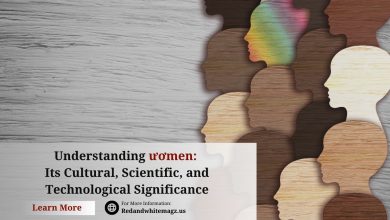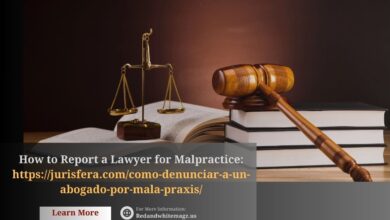Aborloo And Fossa Alterna A Joint Publication By Irc

What is “Aborloo and Fossa Alterna a Joint Publication by IRC”?
“Aborloo and Fossa Alterna a joint publication by IRC” is a study focused on improving sanitation systems in areas with limited resources. It provides detailed instructions and guidelines for building and managing two ecological sanitation (EcoSan) systems: the Aborloo and the Fossa Alterna.
These systems were designed to be low-cost, sustainable, and suitable for areas without regular access to water or waste management services.
The publication, by the International Water and Sanitation Centre (IRC), aims to promote better sanitation and hygiene in rural and underserved areas, which can reduce the spread of diseases and improve the quality of life for communities.
Both the Aborloo and Fossa Alterna systems are designed to safely convert human waste into compost. This compost can be used to improve soil quality, which is particularly helpful in agricultural communities.
The publication includes step-by-step instructions, drawings, and tips for maintaining these systems. The goal is to make these sanitation solutions accessible and easy to implement, helping communities become more self-reliant in managing their waste.
How Do the Aborloo and Fossa Alterna Systems Work?
In “Aborloo and Fossa Alterna a joint publication by IRC,” the systems are explained in simple terms. The Aborloo is a pit latrine system where a shallow pit is dug into the ground. The waste collects in the pit, and once it’s full, the pit is covered with soil, allowing the waste to decompose and turn into compost.
This process takes about a year, and the compost can then be used to improve soil for growing crops. The pit is abandoned after being filled, and a new one is dug in a different spot.
The Fossa Alterna system, on the other hand, uses two shallow pits that alternate in use. One pit is used while the other rests and decomposes the waste. After about a year, the resting pit’s contents turn into compost, and the other pit is then used. This process continues, making Fossa Alterna a more sustainable option for long-term waste management.
Both systems rely on natural processes to break down waste and avoid the need for costly infrastructure. This makes them particularly suited for communities with limited resources.
Why Were These Systems Developed?
The development of the systems described in “Aborloo and Fossa Alterna a joint publication by IRC” was driven by the need for affordable and sustainable sanitation solutions in rural and low-income communities.
Many areas around the world lack access to safe, clean sanitation facilities. This can lead to the spread of diseases like cholera, dysentery, and diarrhea, which are all related to poor hygiene and waste management.
Traditional flush toilets require a large amount of water, something that many communities cannot afford or access. Furthermore, the infrastructure needed for sewage treatment is often expensive and difficult to maintain in rural areas.
The Aborloo and Fossa Alterna provide an alternative by focusing on simple, natural processes to safely manage human waste. These systems not only improve health by reducing open defecation, but they also help communities grow their own food using the compost created from the waste.
What Are the Main Benefits of Aborloo and Fossa Alterna?
“Aborloo and Fossa Alterna a joint publication by IRC” highlights several benefits of these systems. First, they are affordable and require minimal materials to construct. In many cases, local resources can be used, making the systems cost-effective for low-income communities. The simple design also means that they can be built and maintained by local people without the need for specialized skills.
Another key benefit is the environmental impact. By converting human waste into compost, these systems reduce the pollution associated with untreated sewage and improve soil fertility. The compost can be used in gardens and farms, which supports food security and helps communities become more self-sufficient.
Moreover, these systems improve public health by reducing the risk of waterborne diseases. By keeping human waste contained and allowing it to decompose safely, the risk of contamination to water sources is minimized. This has a significant impact on the health of the community, especially in areas where water is scarce or difficult to purify.
How Does the Aborloo System Differ from Traditional Pit Latrines?
One of the key differences between the Aborloo and traditional pit latrines, as detailed in “Aborloo and Fossa Alterna a joint publication by IRC,” is the size of the pit. The Aborloo uses a much shallower pit, which makes it easier to dig and manage. Traditional pit latrines often have deep pits that can be difficult to dig and maintain, and once they are full, they pose a greater risk of contaminating groundwater.
Another difference is that the Aborloo is designed with the intention of turning the waste into compost. Traditional pit latrines are typically abandoned once they are full, with no attempt to use the waste productively. The Aborloo, on the other hand, allows for the waste to decompose in place, and after a year, the pit can be covered with soil and used as a place to grow trees or crops.
The simplicity of the Aborloo makes it an ideal choice for areas with limited resources, as it can be built using locally available materials and doesn’t require deep excavation or expensive tools.
What Makes Fossa Alterna a Sustainable Sanitation Solution?
The Fossa Alterna system stands out as a sustainable sanitation solution in “Aborloo and Fossa Alterna a joint publication by IRC” because it focuses on reusing human waste in a safe and productive way. By alternating between two shallow pits, the system ensures that waste is given enough time to decompose fully before being used as compost. This reduces the risk of contamination and makes the system more efficient over time.
Sustainability also comes from the low cost and minimal maintenance required. Once the system is set up, it can operate for years with very little upkeep. Additionally, by producing compost, the system supports local agriculture and reduces the need for chemical fertilizers.
Because the Fossa Alterna doesn’t require water for flushing, it is particularly suited for arid regions or areas where water conservation is a priority. This makes it a versatile and adaptable option for different environmental conditions.
What Are the Challenges of Implementing These Systems?
While “Aborloo and Fossa Alterna a joint publication by IRC” outlines many benefits, it also acknowledges some challenges. One of the primary challenges is the need for community education and acceptance. In some cultures, the idea of handling or reusing human waste can be met with resistance, even if the composting process renders the waste safe and useful.
Another challenge is the physical labor involved in digging the pits and maintaining the systems. Although the pits are shallow, they still require effort to dig, and some communities may lack the tools or physical capability to do this work without external support.
There can also be difficulties related to soil conditions. In areas with rocky or sandy soils, digging pits may be more difficult, and the composting process might not work as effectively. These factors must be considered when deciding whether to implement the Aborloo or Fossa Alterna systems.
How Can Communities Benefit from the Publication?
“Aborloo and Fossa Alterna a joint publication by IRC” provides a valuable resource for communities that are looking for affordable and sustainable sanitation solutions. By following the detailed instructions and guidelines in the publication, communities can build and maintain their own EcoSan systems without relying on expensive external support.
The publication also empowers communities by promoting self-reliance. Once the systems are in place, they can be managed locally, with minimal ongoing costs. This can have a transformative effect on public health, agriculture, and the environment.
The knowledge shared in this publication helps to break down barriers to good sanitation and offers a practical solution to one of the biggest challenges facing rural and low-income communities today.
Table of Benefits of aborloo and fossa alterna a joint publication by irc
| Benefits | Aborloo | Fossa Alterna |
| Cost | Low, uses local materials | Low, uses local materials |
| Environmental Impact | Produces compost, reduces pollution | Produces compost, reduces pollution |
| Health Benefits | Reduces waterborne diseases | Reduces waterborne diseases |
| Maintenance | Minimal, once set up | Alternating pits require minimal upkeep |
| Water Usage | No water needed for operation | No water needed for operation |
| Usability | Simple, can be built with basic skills | Simple, requires only two pits |
| Soil Improvement | Compost can be used for agriculture | Compost can be used for agriculture |
| Lifespan | Can be used indefinitely with new pits | Alternating pits extend system’s life |
Frequently Asked Questions (FAQs)
How long does it take for waste to decompose in these systems?
It typically takes about one year for waste to fully decompose into compost.
Can the compost be used for growing food?
Yes, the compost is safe to use for growing trees, crops, and plants.
Do these systems require water for flushing?
No, both the Aborloo and Fossa Alterna systems operate without water.
Are these systems expensive to build?
No, they are designed to be low-cost and use materials available locally.
How often do the pits need to be emptied?
For the Aborloo, pits are covered when full. In the Fossa Alterna, the pit alternates annually.
Conclusion
The “Aborloo and Fossa Alterna a joint publication by IRC” is a key resource. It provides practical, low-cost sanitation solutions. These systems offer clean, eco-friendly ways to manage waste. They improve health and soil quality through composting. Communities with limited resources benefit greatly. With simple instructions, these systems are easy to build. They also help reduce disease and protect the environment. By using local materials, costs stay low. Overall, the “Aborloo and Fossa Alterna a joint publication by IRC” empowers communities to improve hygiene and agriculture sustainably. It offers long-term, affordable solutions for better living.





